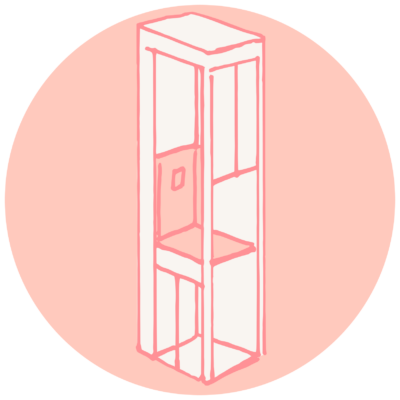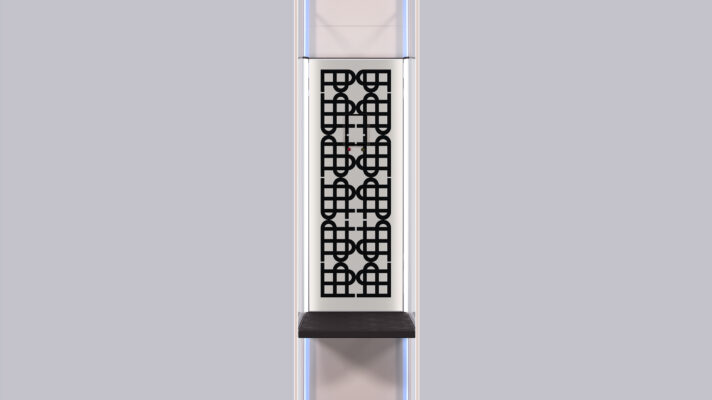Platform lifts - how do they work?
SWIFT is a so called “platform lift” type of elevator. Below you find some information about platform lifts and what regulations we follow.
Platform lifts have no cabin/basket
Unlike a conventional lift that has a cabin (basket) that moves up and down, a platform lift consists of a platform (floor) that moves up and down. The platform is attached to a drive unit that runs along guide rails in an enclosed shaft. This way, platform lifts have a more open feel for the user, which is particularly important if the lift is small (such as in a private home).

Platform lifts follow a simpler set of regulations
Platform lifts are subject to the European Machinery Directive, which is a simpler directive than the European Lift Directive for conventional lifts. To comply with the simpler Machinery Directive, a platform lift solution must meet certain safety requirements. One such requirement is that the speed within Europe is limited. Another requirement is that you must keep the button pressed when running within Europe. These safety requirements are carefully balanced to provide as safe and secure a run as possible, without affecting the experience.

Screw and nut is the most common technique
The most popular platform lifts have a drive system based on “screw and nut technology”. The technology relies on an electric motor causing a nut to rotate along a long special drive screw. As the nut rotates, the platform lift moves up or down. There are also other technologies for driving platform lift solutions, such as hydraulic or chains. These technologies often make more noise or could have potential oil leaks, thus are used less and less.
A platform lift is an extremely safe choice
A platform lift is one of the safest and most reliable elevators one can ride in. This is due to the many safety features in the lift itself, such as the double safety brakes required, safety edges to prevent anyone from getting pinched, emergency opening functions, and various battery backup solutions in case of power failure. Platform lift solutions have been mostly used in public settings such as school handicap accommodations, stores, or other public buildings in the last 30 years.
The reason they have become so popular is that the EU implemented new non-discrimination laws and regulations for the disabled in the 1990s, creating a huge demand for smart and cost-effective elevators. Sweden was one of the first countries to follow the regulations, and thus Sweden has become strongly associated with platform lifts with several different manufacturers.
Most Common in Buildings with 2-6 Floors
Platform lifts are primarily used in buildings up to 6 floors or a maximum of 15-20 meters in lifting height. The lifts can normally lift from 250 kg to 1000 kg and come in many different sizes to fit different types of buildings.

Advantages of platform lifts
Platform lifts are very popular for several reasons. Among other things, they are practically “all-inclusive” with a shaft designed as building blocks of glass or shaft panels. This way, no money needs to be spent on building an external shaft, and no special doors on each floor are required. In addition to this, some of the main advantages compared to hydraulic lifts or rope lifts are that platform lifts do not require a machine room, safety space under the lift (how does it work with a pit) or safety space above the lift. Overall, it is therefore much easier to install a platform lift and the costs of construction work are much lower.

Platform elevators and SWIFT
With SWIFT, we have attempted to bring together the feeling of riding and luxury from a traditional elevator with the smart, simple and secure features of a screw-driven platform lift. The result is a luxurious, energy-efficient, all-inclusive elevator that is affordable, compact in size and easy to install. Perfect for private homes.



